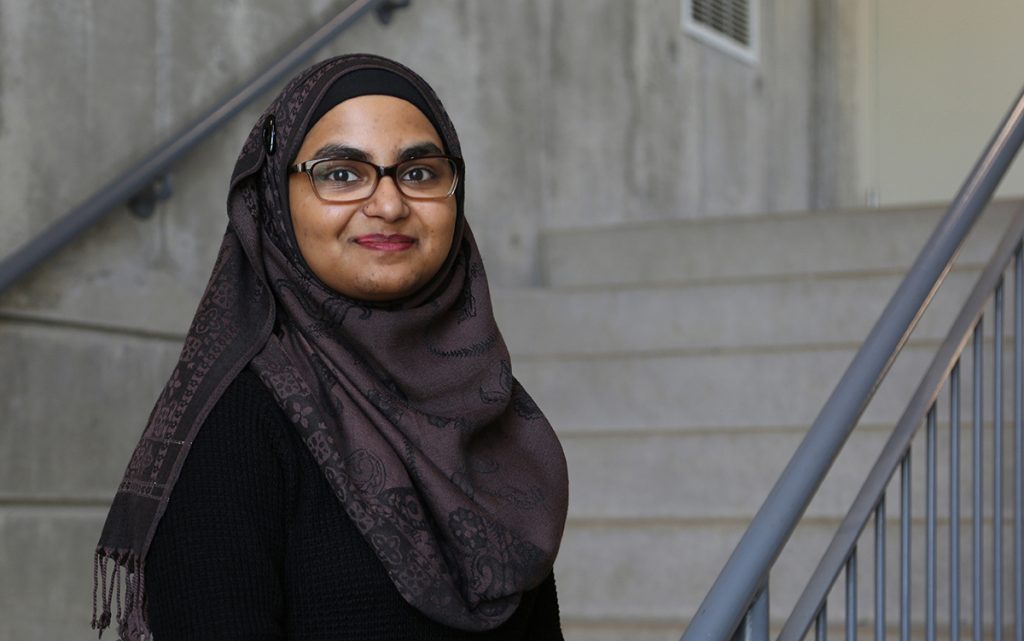
Chaos theory may seem like a very complex topic, but EngSci student Naireen Hussain is not intimidated. The Year 4 student recently published a research paper in the Monthly Notices of the Royal Astronomical Society on a key question about the role chaos plays in planetary motion. The publication is the result of several years of work with Professor Daniel Tamayo of Princeton University.
Hussain spent two summers and part of two academic years working with Tamayo at U of T’s Department of Astronomy & Astrophysics. They took on a challenging research topic related to the uncertainty inherent in the movement of solar systems. Their work helps to quantify how stable a planetary system is, and will help guide the assumptions that astronomers make when studying planetary dynamics or formation from afar. Hussain’s research focused heavily on statistical and computational analysis.
“For an undergraduate to produce such high-impact research is very impressive, let alone being first author on a scientific paper before they graduate,” says Professor Aimy Bazylak (MIE), EngSci’s Associate Chair for Research.
Read more about Naireen’s research in The Varsity.
Hussain is one of many EngSci students who spend their summers in university research labs at U of T and around the world. In addition to EngSci’s own Engineering Science Research Opportunities Program (ESROP), the university supports summer research through its Centre for International Experience, the University Toronto Excellence Awards, NSERC USRA, and many department-specific summer research programs. Engineering students who conduct research on campus can present their work at the annual Undergraduate Engineering Research Day (UnERD) conference every August.
“I recommend that all of our students gain research experience. They will learn how to distinguish between research and engineering, which is an asset in industry or academia,” says Bazylak.
We sat down with Naireen Hussain to learn more about her experience.
How did you come to work with Prof. Tamayo?
After Year 1 in EngSci, I participated in the Summer Undergraduate Research Program (SURP) jointly hosted by the Canadian Institute of Theoretical Astrophysics and the Dunlap Institute of Astronomy and Astrophysics. Because I enjoyed it a lot, I returned after Year 2 and paired up with Prof. Tamayo. I continued to work with him through Year 3, and then took a break for the Professional Experience Year Co-op Program. In Year 4 we wrapped up our work, and got the research paper out the door and published.
What was it like being part of a research group with grad students, postdoctoral fellows, and professors?
It was a very welcoming environment. The work itself was mostly done in small groups, but during the summers, there were weekly meetings where the larger research group would gather to talk about their progress or about recent papers, which was a great opportunity to learn about other research frontiers.
What did you learn through this experience?
Research is slow hard work! It takes substantial time to have solid evidence to back up your hypothesis, and to ensure that you didn’t miss any details when validating your claim.
From a technical perspective, I definitely learned a lot of transferable technical skills, especially in statistics. These are of use to me even though I ultimately decided to pursue robotics in my studies instead of astrophysics.
Do you have any advice for students about doing research?
Don’t feel intimidated if you’re in your first or second year, as professors are generally enthusiastic and are willing to help mentor you. As long as you demonstrate initiative, you’ll be surprised by how much you’d be able to learn! Also, if possible, it is worthwhile to continue research into the school year. The extended time allows you to examine a problem in more depth.